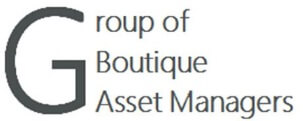
The cost of your car insurance premium can pose a significant financial burden, with many motorists reportedly paying more now than they were in previous years.
In fact, the Association of British Insurers (ABI) reported that motor insurance premiums rose by 29% during the third quarter of 2023, taking the average price of a policy to a record high £561.
With this in mind, private hire insurance specialists at Zego have shared six factors that insurers take into consideration when calculating your premium and have provided some tips on how you can bring down your quote.
Location
When making a claim, insurance providers are likely to look at local statistics for your area, such as driving behaviour, crime rate, and the average number of legitimate and fraudulent claims made by other road users. For example, you may live near a road known for its car accidents, which could mean more claims are being made in your area as a result.
Compare the Market found that insurance premiums in Greater London can cost on average £200 more compared to other areas of the UK, such as the West Midlands or the Northwest. By comparison, Northern Ireland has some of the cheapest insurance premiums by around £100 less on average.
Where you park your vehicle is also considered by insurance providers, including vehicles without protected parking or overhead cover being vulnerable to damage compared to being stored in a garage, although some insurers also see garages as potential damage risks so be sure to shop around. Parking your car in a private car park whilst working and in your own driveway at home is recommended to reduce overall costs.
Occupation and employment status
Listing your occupation when searching for a policy, allows insurance providers to calculate how likely you are to make a claim. Insurers use what are known as ‘actuarial risk tables’ to determine how certain occupations either increase the likelihood of getting into an accident and needing to claim.
According to MoneySuperMarket, hospital consultants had the highest car insurance quotes on average between November 2022 and January 2023, followed closely by car salespersons. This is likely linked to the long, irregular shifts hospital consultants work and the amount of time car salespeople spend in their vehicles, both of which increase the risk of accidents.
MSE’s Car Insurance Job Picker shows that making small legal tweaks to how you list your occupation can slash money off your quote. If you do not work and your annual premium is normally £500, you could save £100 simply by changing your job title from ‘Unemployed’ to ‘Not in employment.’ Similarly, if you can’t work for health reasons, the same quote could drop to £318 simply by changing this to ‘Not employed due to disability’ or to £161 if you put that you are ‘Retired.’
If you tweak your job occupation, make sure that it remains accurate and representative of what you do. If you’re a driving instructor but you list that you are a plumber, this is considered fraudulent, and it will void your policy if your insurer finds out. If you are unsure, make sure to consult with your insurer first.
Age
Younger drivers are usually seen as inexperienced on the roads and more likely to get into accidents, meaning their premiums are increased due to the claims they are expected to make.
The Association of British Insurers (ABI) found that premiums fall significantly for drivers aged between 31-75, who see average claims as low as £3,224. Whilst drivers aged between 56-60 have lower average claims, drivers aged between 66-70 and 81-85 have the lowest claim frequencies.
However, older drivers can also receive higher insurance premiums because they are seen as being a ‘higher risk’ behind the wheel and statistically prone to accidents.
Individuals over the age of 70 are the most likely to receive these extra costs, which is also when they are required to renew their license to be able to continue driving.
Installing a black box can help lower these costs by showing that the individual willing to prove that they are a safe and responsible driver. While most people think black boxes are reserved for younger drivers, people of any age can install a black box or telematics system to help cut the cost of their premium.
Vehicle profile
All vehicles are categorised into insurance groups, which play a role in calculating your premium. These groupings are based on the vehicle’s price when new, repair costs, model, and other factors. According to the AA, insurance providers also consider vehicle safety features such as locks and alarms to determine how secure the car is likely to be.
The vehicle’s current age is one of the largest contributing factors because it can affect the cost of maintenance, especially if the model is newer. For example, a brand-new, expensive car will likely have higher insurance premiums than an older vehicle with many miles behind it.
Modifications can also raise the price unless they help prevent damage over time. Ensure that your car has alarms and immobiliser installed to keep your locks and alarms up to date and opt for small cars with less powerful engines, whether old or new, for cheaper insurance options.
Mileage and driving history
How often you drive your car can also influence the cost of your insurance premium. As a general rule, the more miles you drive throughout the year, higher your premium is likely to be, since you are more likely to be involved in an accident and may need to make a claim. Therefore, it’s important to accurately estimate your annual mileage, to prevent paying more than you need to.
If the amount you use your car is unlikely to change from the previous year, an easy way to calculate your annual mileage is to look at your most recent MOT certificates. You can calculate the difference between your last two tests, to determine your annual mileage. Alternatively, you can make a note of your vehicle’s mileage when you take out a new policy and again when it comes to renew it, to accurately calculate how much you are driving.
Insurance providers also take into consideration any suspensions, convictions, or penalty points on your license when calculating your premium. Your past driving history provides the best indication of whether you might make any future claims, although accidents and moving violations are rated differently in terms of risk. In general, a car accident will stay on your insurance record for 3 years, but this can vary.
Claims history
One of the biggest factors that can affect your insurance premium is if you have previous made a claim. These can heavily increase the cost, depending on the type of claim made, but it is still important that you declare any claims when asked. This should include non-fault claims, which are accidents that you are not to blame for causing.
Your claims history, or lack thereof, can also work in your favour as providers will consider up to five years of no-claims bonus when discounting your premium. This means a discount can be applied to an insurance policy or premium based on the number of consecutive years the driver has avoided making any claims for their vehicle, up to five in total.



























